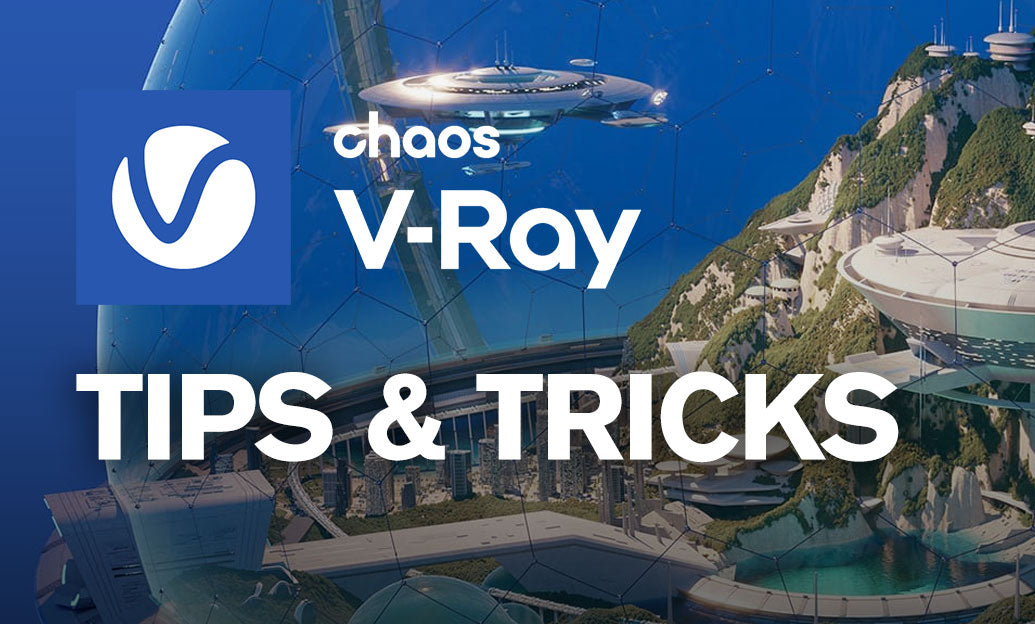Your Cart is Empty
Customer Testimonials
-
"Great customer service. The folks at Novedge were super helpful in navigating a somewhat complicated order including software upgrades and serial numbers in various stages of inactivity. They were friendly and helpful throughout the process.."
Ruben Ruckmark
"Quick & very helpful. We have been using Novedge for years and are very happy with their quick service when we need to make a purchase and excellent support resolving any issues."
Will Woodson
"Scott is the best. He reminds me about subscriptions dates, guides me in the correct direction for updates. He always responds promptly to me. He is literally the reason I continue to work with Novedge and will do so in the future."
Edward Mchugh
"Calvin Lok is “the man”. After my purchase of Sketchup 2021, he called me and provided step-by-step instructions to ease me through difficulties I was having with the setup of my new software."
Mike Borzage
V-Ray Tip: Strategies for Optimizing and Organizing V-Ray Scene Setups
October 04, 2025 2 min read

Optimizing your V-Ray scene setup is crucial for maintaining clarity and ensuring efficient workflows. A well-organized scene not only enhances productivity but also simplifies troubleshooting and future modifications. Here are key strategies to achieve a clear and optimized V-Ray scene:
-
Organize with Layers and Groups:
- Use layers to categorize different elements such as geometry, lighting, and textures.
- Group related objects to manage visibility and selection easily.
-
Adopt Clear Naming Conventions:
- Assign descriptive names to objects, materials, and textures to quickly identify them.
- Consistent naming helps in navigating complex scenes and collaborating with team members.
-
Utilize V-Ray Proxy Objects:
- Replace high-polygon models with V-Ray proxy objects to reduce memory usage and enhance performance.
- Proxies allow for easier scene management without compromising on detail.
-
Optimize Geometry:
- Remove unnecessary polygons and use instancing for repeated objects to minimize scene complexity.
- Check for and eliminate any hidden or overlapping geometry that can clutter the scene.
-
Efficient Material Management:
- Limit the number of unique materials to streamline the rendering process.
- Use material libraries or V-Ray's Asset Editor for easy access and reusability.
-
Leverage Scene States:
- Create different scene states to switch between various configurations for lighting, visibility, or rendering settings.
- This approach allows for quick adjustments without altering the entire scene setup.
-
Implement Proactive Naming and Tagging:
- Tag assets with relevant metadata to facilitate search and filtering within the scene.
- Use consistent prefixes or suffixes to indicate object types or roles.
-
Utilize Reference Files:
- Break down complex scenes into manageable reference files to enhance performance and organization.
- Reference files allow for modular scene construction and easier updates.
-
Optimize Texture Usage:
- Use appropriately sized textures to balance quality and memory usage.
- Consolidate textures where possible to reduce the number of files and streamline material assignments.
-
Regular Scene Cleanup:
- Periodically review and clean up unused assets, materials, and textures to maintain scene clarity.
- Use tools or scripts that can help identify and remove redundant elements.
-
Documentation and Notes:
- Maintain documentation for complex scenes to keep track of setups, workflows, and custom configurations.
- Use annotation tools within your 3D software to leave notes for yourself or collaborators.
For more in-depth strategies and resources on optimizing your V-Ray workflows, visit Novedge. Novedge offers a wealth of tutorials, forums, and expert advice to help you enhance your 3D rendering skills and streamline your scene setups.
Implementing these practices will lead to a more organized and efficient V-Ray environment, allowing you to focus on creativity and achieve higher-quality renders with less hassle.
You can find all the V-Ray products on the NOVEDGE web site at this page.
Also in Design News

Cinema 4D Tip: Maximizing Workflow Efficiency with Cinema 4D's Structure Manager
October 04, 2025 3 min read
Read More
Bluebeam Tip: Optimize PDF Edits with Bluebeam Revu's Erase Content Tool
October 04, 2025 2 min read
Read More
ZBrush Tip: Optimizing Workflow with ZBrush Subtool Menu: Tips and Best Practices
October 04, 2025 2 min read
Read MoreSubscribe
Sign up to get the latest on sales, new releases and more …


